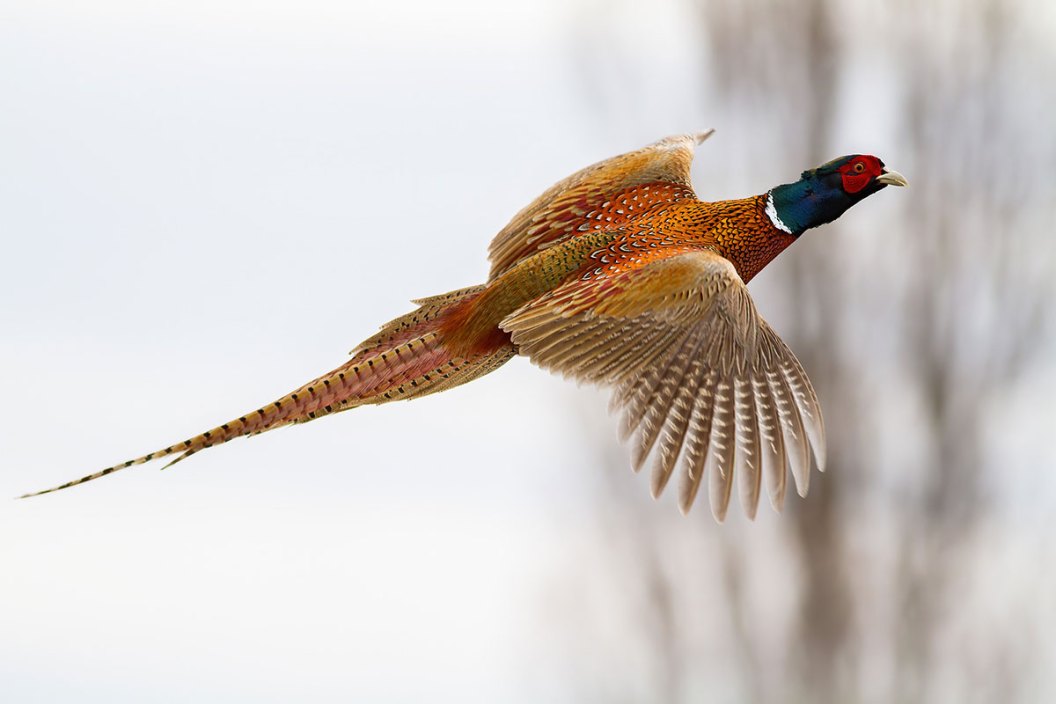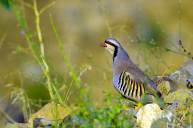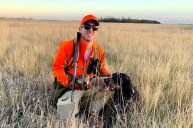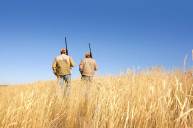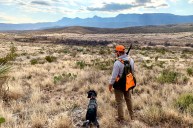Though it's a true symbol of the hunting heritage in America's Heartland, pheasant hunting didn't actually begin here. One of most successful and revered game birds ever established as a stocked animal, the ring-necked pheasant first came to the shores of Port Townsend, Washington, in 1881 when Owen Nickerson Denny and his wife wanted to introduce a resident population to their home state of Oregon. However, the initial effort was largely unsuccessful, as the majority of the 60 birds died on their way over from China, although they were able to stock a handful of survivors into the lower Columbia River Valley. The complications of first immigration didn't discourage Denny, though, who had even more pheasants shipped between 1882 and 1884, which would eventually lead to healthy, thriving bird populations in Oregon's Willamette Valley and on Protection Island in Jefferson County near Port Townsend.
Since then, pheasants have become not only a staple of American hunting traditions for well over a century, but also a key member of various ecosystems across the Lower 48. Particularly in the Great Plains, pheasants seem more like a native species than one that came over from Asia not so long ago. Today we're going to delve into the life cycle of a pheasant, as well as how and why we hunt them.
Detailing the Ring-Necked Pheasant
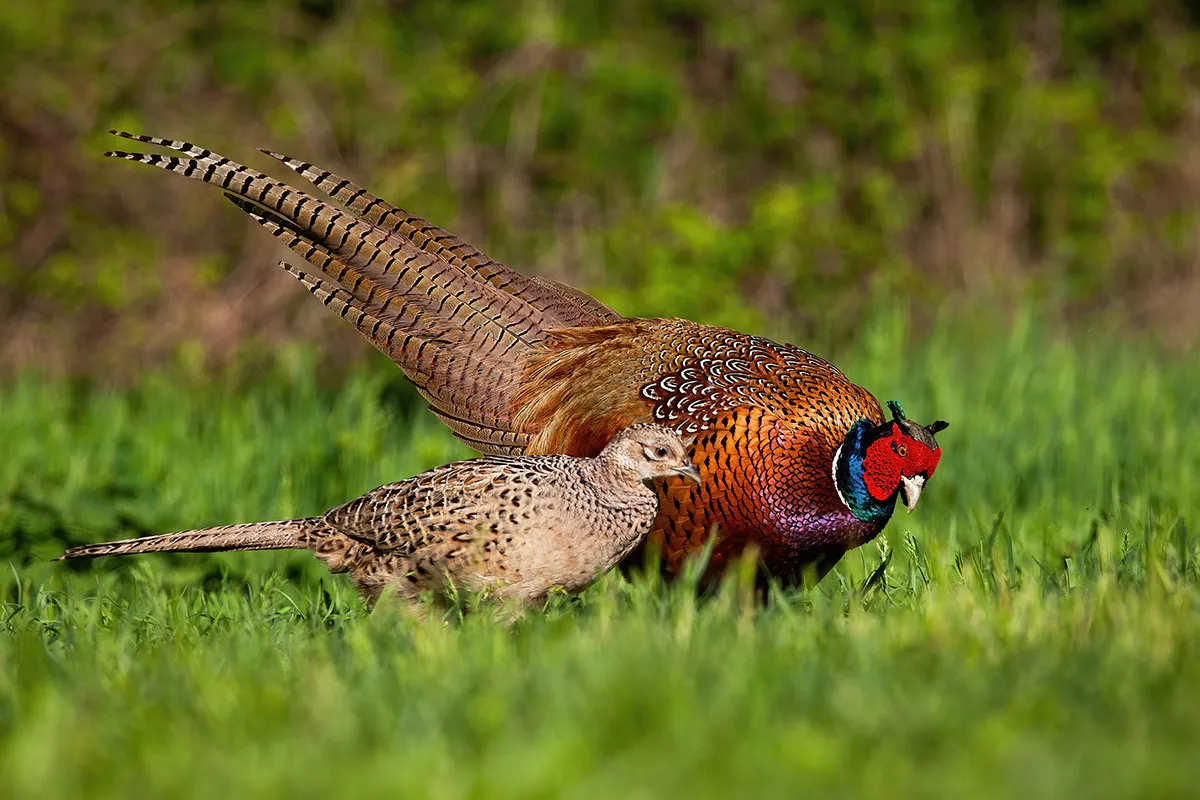
Fortunately there's no confusing a rooster and a hen pheasant. Roosters have a beautiful iridescent copper-and-gold plumage with a red face and a glowing white collar. Their raspy crow is equally as unmistakable, as one of these loud flyers can be heard cackling from a mile away as the burst from brushy cover.
In spring and early summer, you can listen and watch for males calling and putting on a wing-flapping display in hedgerows and on field edges. There, they'll feed on leftover grains from harvested fields, as well as seeds, buds, insects, earthworms, and berries. As they begin breeding in the spring, roosters will battle for mating rights, and then defend their claimed females by assuming an elevated position, crowing loudly, and drumming their wings.
Hens, on the other hand, will make a nest site on the ground in dense cover, which is most often a fairly shallow depression lined with grass and leaves that protects her clutch of 6-12 eggs, which take 23-28 days to incubate before hatching. They downy young will leave the nest shortly after, feeding themselves for about 10-12 weeks.
The range of the ring-necked pheasant here in North America is impressive, as they're still well established in the Pacific Northwest, but have stretched all the way across to the Northeast, with their healthiest populations being in South Dakota and its neighboring state.
Pheasant Hunting Without Dogs

Hunting for this upland game bird typically requires a small game hunting license and a firm grasp of local regulations. Seasons vary by state, but stay congruent with most hunting seasons, running through the fall and winter. However, if you live near a licensed pheasant farm, often referred to as a hunting preserve or a hunt club, then you have the luxury of longer seasons.
Bag limits vary depending on where you plan to hunt, but the most popular destination state, South Dakota, limits hunters to three roosters per day. Some states allow for the taking of hens as well, namely preserves.
Pheasant hunting tends to yield the most success early in the morning and in the evening as the sun goes down, as birds travel to feed at dawn and to rest at dusk. Therefore, this is when you'll see the most movement and activity, which presents the best opportunity to harvest a bird. The difference in success is drastically affected if you're one who hunts pheasants without a bird, too, as driving birds on foot is far more efficient if you're crossing paths with birds on the move. The best way to do this is having one or more hunters positioned on one side of a hedgerow or at the end of a field while the others walk through the cover. If you're in a hot spot, this almost always results in at least a shot or two.
Even though pheasants (particularly roosters) like to hug field edges, they're also known to frequent water holes, particularly in warmer climates. If you're hunting during the middle of the day, this is the best place to start. In fact, many wildlife management areas are loaded with swamps littered with cattails, which commonly hold birds. However, you'll need to be ready to get after it, as cattails will put your legs and ankles to the test.
During successful drives or in areas where the birds are cooperating, hunters need to be patient and wait for the flush. Sure, it's easier said than done, but nothing gives a hunter more opportunities to get it right quite like pheasant hunting. The same can be said for those times when it seems like every pheasant in that great field you've been hunting has picked up and left for greener pastures. If you know birds are in an area but have hunkered down, work the cover slowly and methodically.
Incorporating Gun Dogs
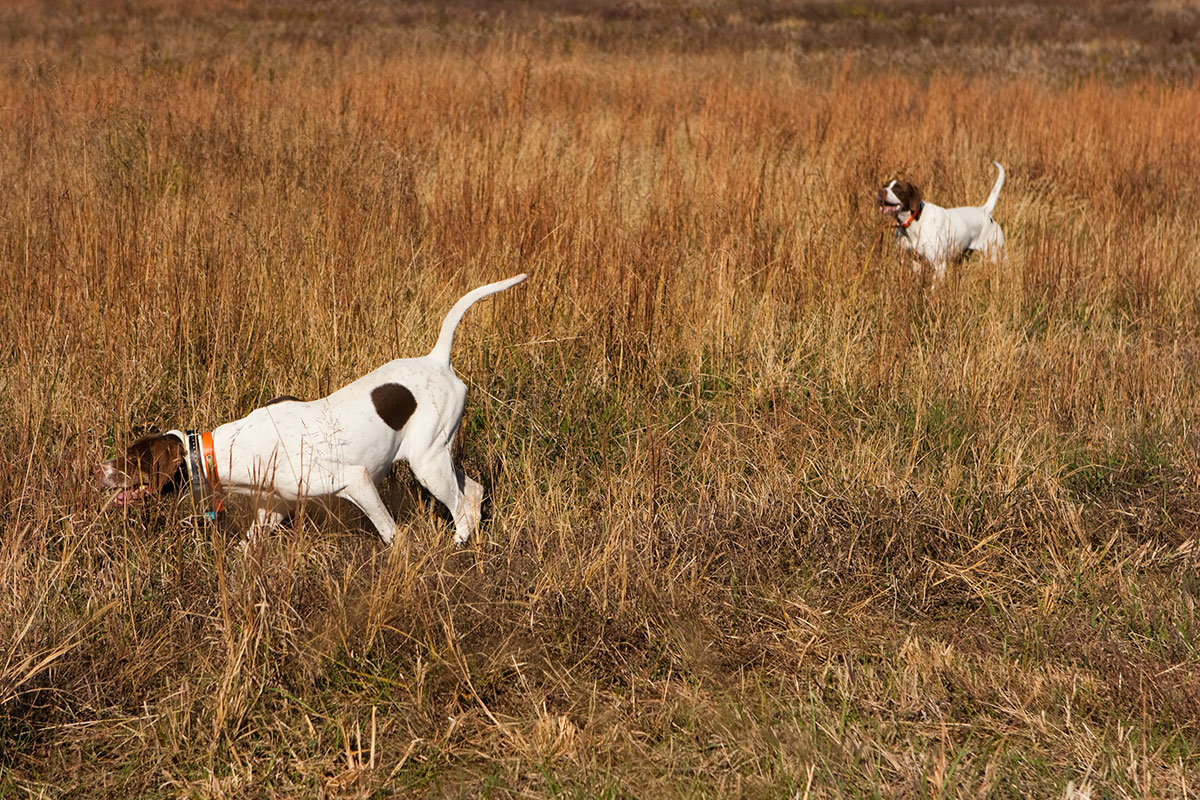
Here is where the rubber meets the road; upland bird hunting and gun dogs go together so well for a reason. A solid, finished gun dog is a joy to behold in good pheasant cover and can undoubtedly tip the scales in your favor. In order to be successful, though, it's important to spend the extra time to properly train your dog, as a green puppy or a dog lacking discipline can scare away more birds than it points. However, if you give a rookie dog ample attention in the off-season, you can still find success right off the bat. And, any uplander will tell you there's no substitute for live birds, so patience is everything in that first season or two; let the dog learn from its mistakes.
Perhaps the greatest advantage to having a great bird dog is the ability to track down pheasants after they are shot, which can be an utter nightmare if you only have human senses to count on in thick pheasant brush. Additionally, if you have a wounded, running bird, your four-legged hunting parter could be invaluable.
People hunt with a variety of different breeds—pointers, flushers, and retrievers—but it really comes down to your preferred style of hunting. If you cherish finesse and strategy, pointers are the best option, and easily the most popular among all pheasant hunters. However, flushers offer more of a run-and-gun element, and retrievers complement both in excellent fashion. Some hunters swear by their retriever as a one-dog show, but rarely will they point with consistency. Both retrievers and pointers can find downed birds and bring them to the hand, though.
Pheasant Hunting Gear
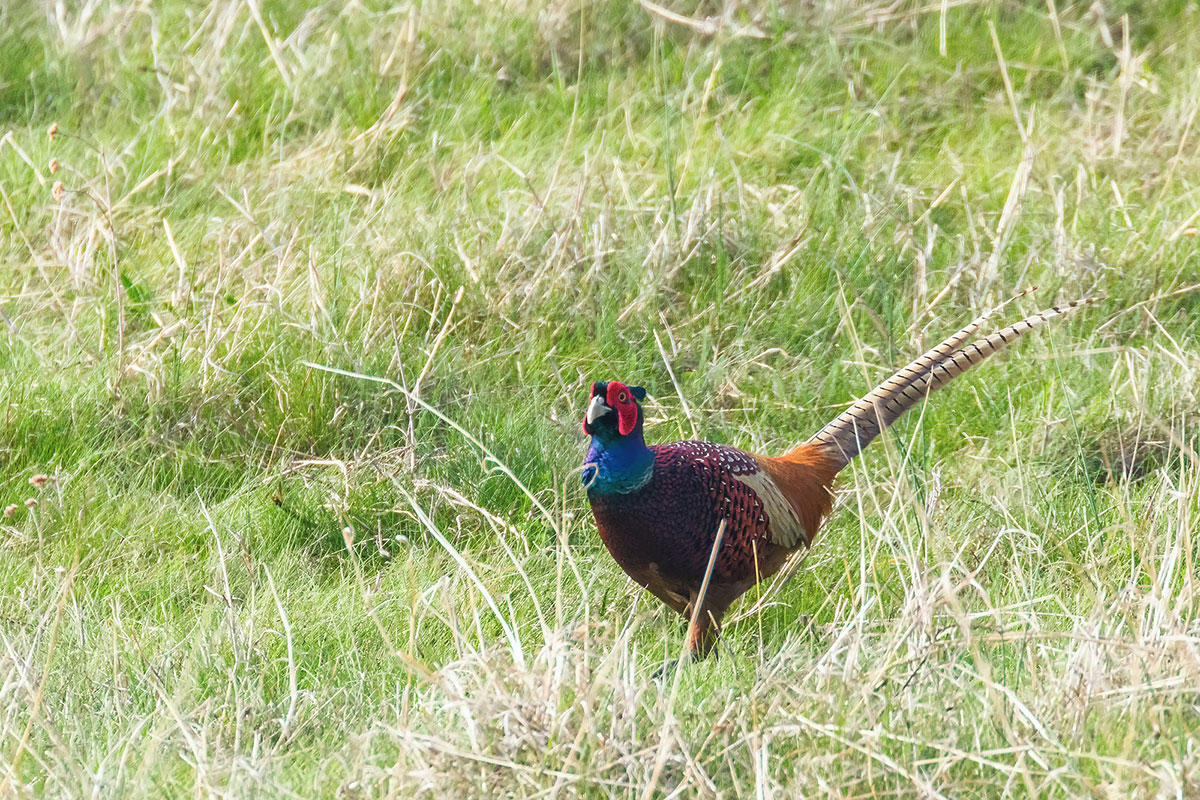
Maybe the best thing about pheasant hunting is that there is no need for scent elimination, decoys, attractant sprays, treestands, or even calls. All it truly requires is a hunter, a shotgun, and the ability to outsmart the birds.
A few of these things may seem rather obvious, but we want to be thorough.
- Hunting license
- Your favorite shotgun and shotgun shells
- Blaze orange hat
- Upland game vest
- Briar pants
- Hunting boots (ideally waterproof)
- Dog GPS unit and training collar
- Whistle
- Water bottle
- First aid kit
The most important piece of equipment is obviously your shotgun, so you don't want to bring the wrong one out to the uplands. Most upland hunters prefer a double-barrel shotgun—side-by-side or over-under—which offers them two shots at a bird, as well as a traditional aesthetic that simply matches the romance presented by a well-trained dog. You can go with 12-, 16-, or 20-gauge, but it really just comes down to preference. The most popular option, thanks to its lighter carrying weight and less damaging loads is a 20-gauge.
Pheasant hunting, just like any other variation of upland hunting, is a sport of preference. Find what works for you, and try to enjoy the time and the approach, as wild birds will make you work to fill the freezer, and it'll almost always end up a little light.
